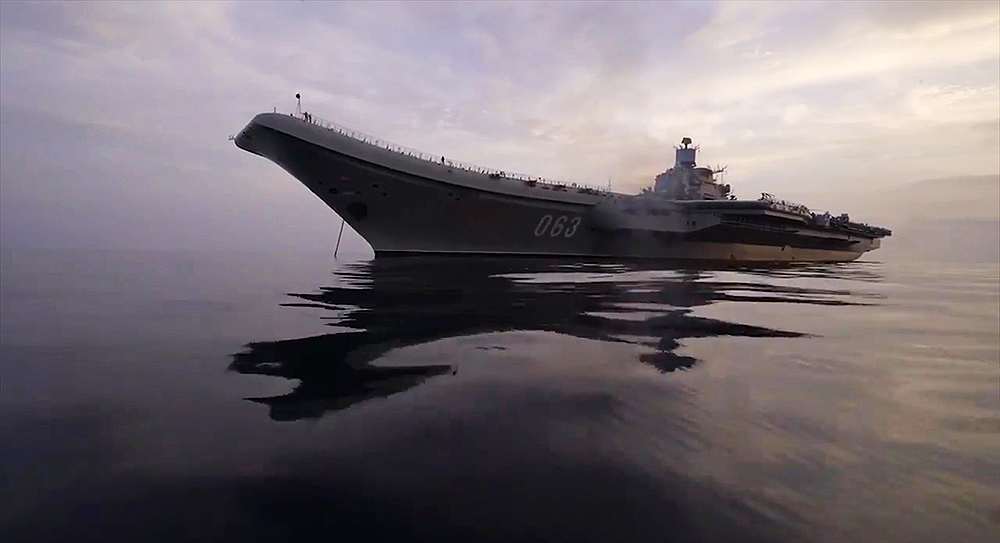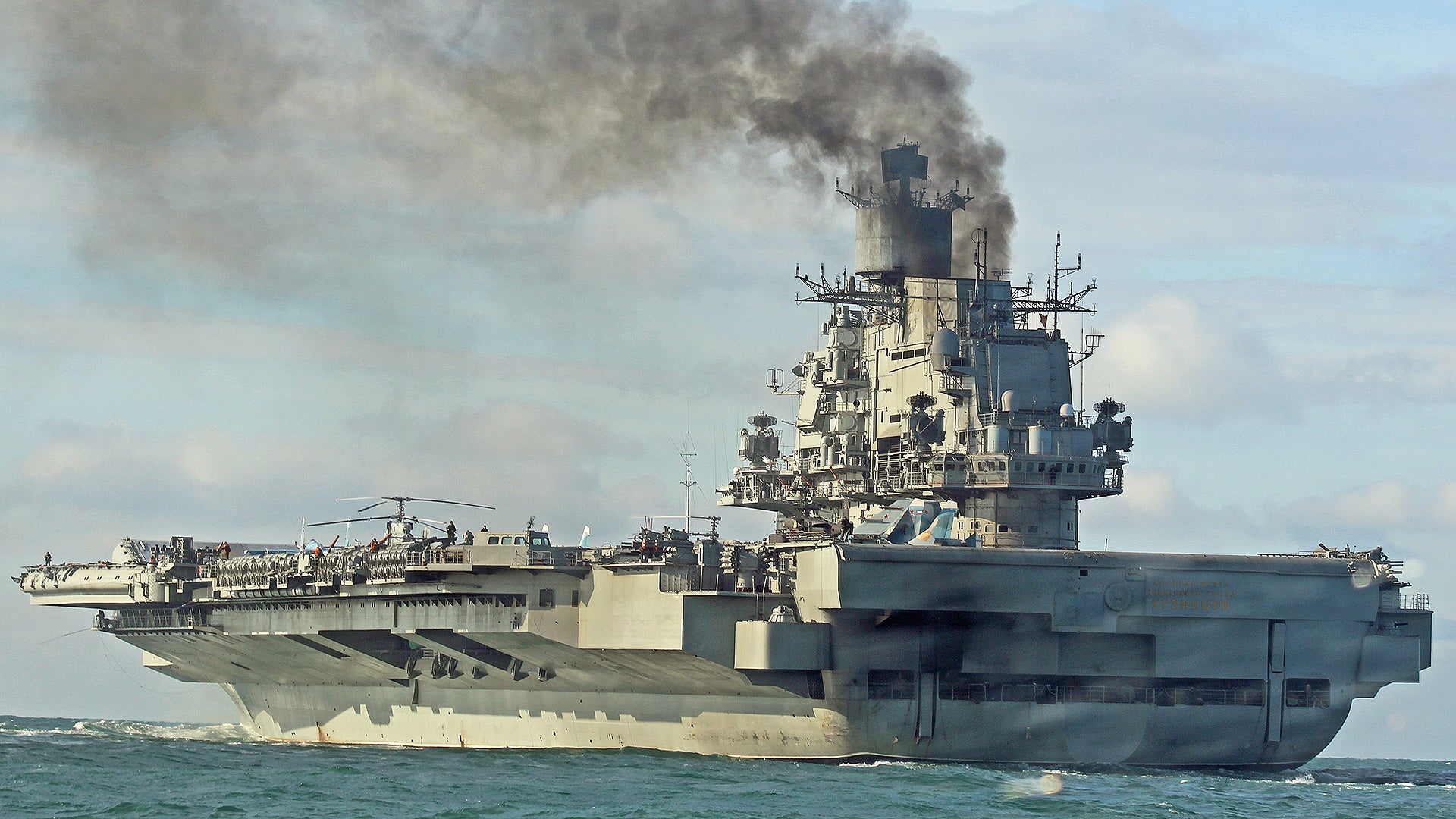Two months after arriving on station early November, Russian officials have announced that the Admiral Kuznetsov and her battle group, the largest assembled since the end of the Cold War, will be leaving the eastern Mediterranean and heading back to their home port in frigid Severomorsk. Once there the Kuznetsov, which has seen far better days, will supposedly begin a long-awaited and needed overhaul that will take at least half a decade to complete.
The ship started its deployment ahead of a major offensive against anti-regime targets, especially in and around the long-time rebel holdout of Aleppo. In mid October, the ship made its way from the Barents Sea through the English Channel and into the Mediterranean under great media scrutiny. Once off the coast of Syria, the flotilla had some fun with NATO submarines. Then, just as combat operations were beginning, the loss of a fuel-starved MiG-29KR—one of the newest jets in Russia’s inventory—turned the deployment sour. Not long after, another jet—this time an Su-33—plunged into the water after an arrestor cable snapped during landing aboard the ship. In both cases the pilots were recovered safely.
Soon after the second loss, fixed-wing operations from the carrier seemed to grind to a halt, and most of the ship’s complement of fighters was seen on the ground at Russia’s master air base in Syria. It appeared that the air wing’s operations had moved mainly ashore.
Now that Aleppo has fallen and Russia, Turkey, Iran and the Assad regime have brokered a shaky ceasefire, the Kuznetsov and her escorts are heading home. The carrier was rumored to be leaving the area sometime in February or March, but its imminent withdrawal appears to be part of the larger draw-down of Russian forces in Syria currently underway.
General Andrei Kartapoloy said on Friday that “Over two months, naval aviation pilots carried out 420 sorties, including 117 at night. Nearly all sorties were accompanied by severe hydrometeorological conditions. A total of 1,252 terrorist targets in Syria were destroyed” How many of these sorties were actually carried out from the ship remains unclear, and Russian “targets destroyed” metrics are always humorous in their grandeur.

With the smoke-billowing carrier making its slow return home it will be interesting to see how Russian naval power, long starved for a ship to practice on, will cope with the Kuznetsov being out of commission. By the time the ship returns from its refit, it is likely its entire tactical fighter contingent will be made up of MiG-29KRs. That is, if the ship actually gets its long touted refit at all—or if its air wing remains intact to see the refit through. Then again, Russia has been remodeling old ships at a relatively brisk pace as part of the country’s military resurgence, it’s likely we haven’t seen the last of the Admiral Kuznetsov, or her lone air wing.
Contact the author Tyler@thedrive,com
